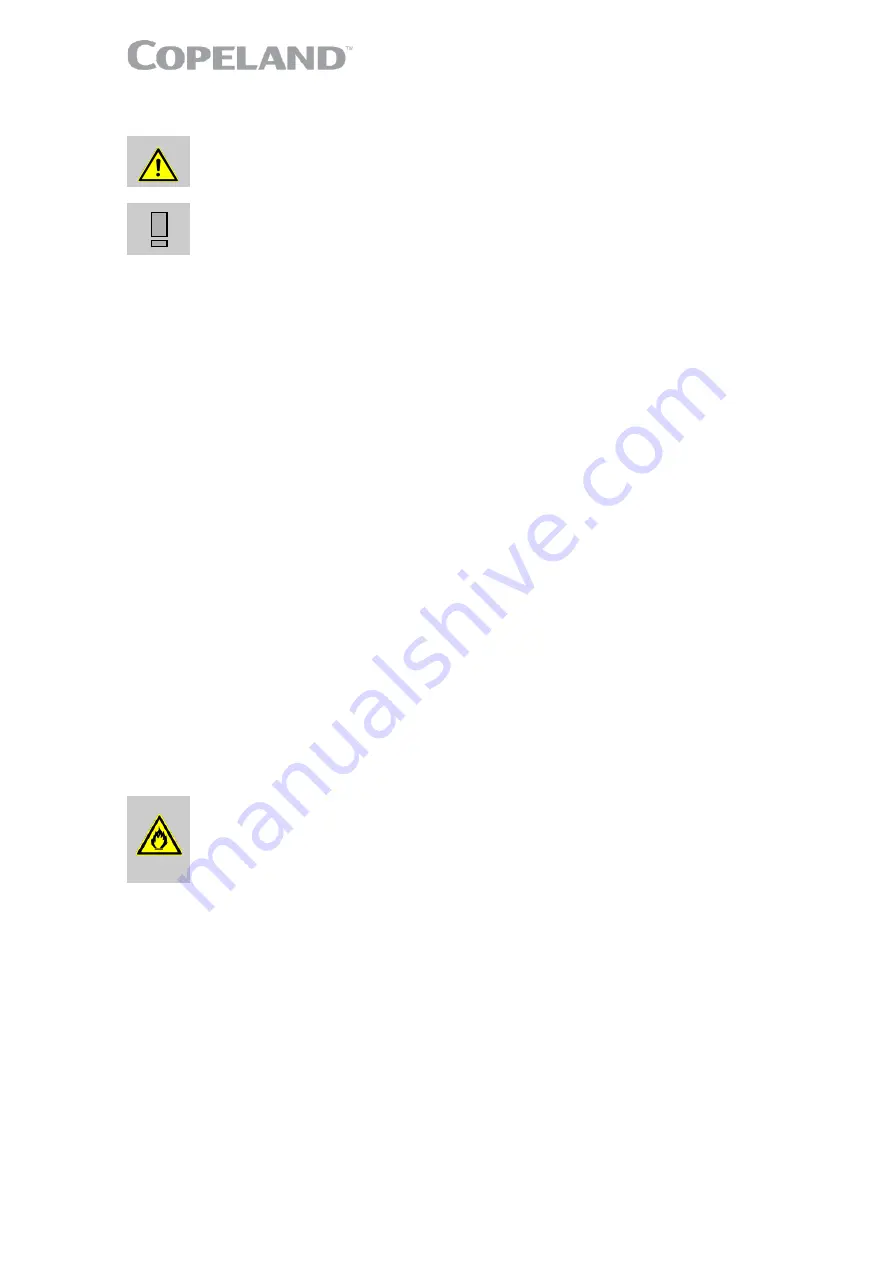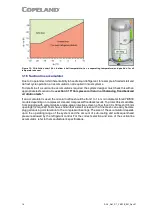
22
AGL_Ref_ST_YBK1E_EN_Rev01
5.2
Compressor tightness test
WARNING
High pressure! Personal injuries!
Consider personal safety requirements
and ref er to test pressures prior to test.
IMPORTANT
System contamination! Bearing malfunction!
Use only dry inert gases (for
example nitrogen) for leak testing. DO NOT USE other industrial gases.
The compressor has been leak-pressure tested in the Emerson factory.
All compressors get a f actory holding charge of dry air (about 1 to 2.5 bar, relative pressure). The
presence of an intact holding charge serves as a proof of quality against penetrating moisture.
When removing plugs from the compressor, the plugs may pop out due to pressure and oil can spurt.
Any later modification to compressor connections can have an impact on the compressor tightness.
Always leak-pressure test the compressor after opening or modifying the connections.
Never add ref rigerant to the test gas (as leak indicator).
5.3
System evacuation
Bef ore the installation is put into commission, it has to be evacuated with a vacuum pump. For A2L
systems, the vacuum pump and all tools have to be approved f or A2L ref rigerant/air mixture. The
installation should be evacuated down to an absolute pressure of 3 mbar. Proper evacuation reduces
residual moisture to 50 ppm. During the initial procedure, suction and discharge shut-off valves on
the compressor remain closed. The installation of adequately sized access valves at the f urthest
point f rom the compressor on the suction and liquid lines is advisable. The pressure must be
measured using a vacuum pressure gauge on the access valves and not on the vacuum pump; this
serves to avoid incorrect measurements resulting from the pressure gradient along the connecting
lines to the pump.
Evacuating the system only on the suction side of a scroll compressor can occasionally result in a
temporary no-start condition f or the compressor. The reason f or this is that the f loating seal could
axially seal with the scroll set, with the higher pressure on the floating seal. Consequently, until the
pressures equalise, the floating seal and scroll set can be held tightly together.
The highest demands are placed on the leak-proof design of the installation and on the leak testing
methods
– please refer to EN 378.
5.4
Preliminary checks
– Pre-starting
WARNING
Air/A2L refrigerant mixture in a potentially flammable atmosphere! Fire
hazard!
Whenever starting up a system charged with A2L refrigerant, eg, after
f illing, repair, or maintenance, make sure not to start and operate accidentally
in a f lammable atmosphere.
Discuss details of the installation with the installer. If possible, obtain drawings, wiring diagrams, etc.
It is ideal to use a check-list but always check the following:
▪
no explosive atmosphere or f lammable gas in the ambient , especially f or systems with A2L
ref rigerants;
▪
suitable ventilation according to the room volume and to the ref rigerant charge, especially for
systems with A2L refrigerants;
▪
visual check of the electrics, wiring, fuses etc;
▪
visual check of the plant for leaks, loose fittings such as TXV bulbs etc;
▪
compressor oil level;
▪
calibration of HP & LP switches and any pressure-actuated valves;
▪
check setting and operation of all safety features and protection devices;
▪
all valves in the correct running position;
▪
pressure and compound gauges fitted;
▪
correctly charged with refrigerant;
▪
compressor electrical isolator location & position.












































